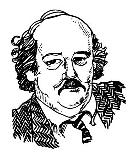(Syndicated to Kansas newspapers Oct. 27, 2014)
 Less than a week after Election Day, when the neighbors are starting to get a little terse in their questions about when you will take down the campaign signs, the real business of government starts.
Less than a week after Election Day, when the neighbors are starting to get a little terse in their questions about when you will take down the campaign signs, the real business of government starts.
That real business is the job of either Republican Gov. Sam Brownback or Democrat challenger Paul Davis to put together a budget for the fiscal year which starts July 1, 2015, and which will probably also involve the current fiscal year’s spending plans.
The Nov. 10 report of the state’s Consensus Revenue Estimating Group (CREG) will be the official estimate of the revenues coming into the state which whoever is governor then will have to use to craft a budget for the fiscal year which starts July 1, 2015—and get us out of the current fiscal year with the lights still on.
Because the CREG group of economists and fiscal experts is nonpartisan, it generally looks at just the hard numbers, which politicians then get to characterize however they want. But the CREG number is the basis on which the budget must be written, and the budget has to add up.
All this is quite a way removed from the campaign rhetoric we’ll be hearing this week. Whatever we have been told about school spending or highways or social service programs or nearly anything else during the campaign just fades away, and Kansans live with the programs and spending that the CREG-estimated budget will afford.
A couple numbers are already floating around. In April, CREG—which meets twice a year—figured that state revenues would be $5.96 billion, about 6 percent below last year, but up about $100 million from last November’s estimate. Already, revenues within this fiscal year are down about $20 million from that April estimate. And, that slippage may be accounted for on Nov. 10.
But the real issue may be whether this year’s April estimate of 6 percent slippage is the bottom of the well, or whether there is more significant year-to-year revenue dropping to be done.
If state revenues have hit rock bottom, that’s good news. It’s a base to start from while the state adjusts to massive income tax cuts and sees whether that “discretionary” spending which produces sales tax and liquor tax and all other sorts of specialized taxes tied to discretionary spending will rise. Remember, the theory is that as income taxes drop, businesses and people will spend the money they are saving on income taxes on other things, paying taxes on those purchases.
But we’re at the point in the state budget that if there aren’t some new revenues coming in, things get a little bleak. Programs are reduced, state employment continues to fall, and at some point, the state just doesn’t have enough money barring a tax increase or something similar to do much for Kansans.
That’s when the state starts looking for programs that local units of government—like cities and counties—have to fund, and likely increase property taxes to accomplish.
So, it’s really going to be the CREG estimate that most of us can use as a predictor of whether our property taxes are going up.
Almost a shame that the estimate won’t be made before the election, but then, it would just get portrayed however each candidate wants to spin it. What might be the most important announcement for the next couple years about where our government is headed would become unclear.
For whomever is governor or governor-elect Nov. 10, the spin cycle will be over.
